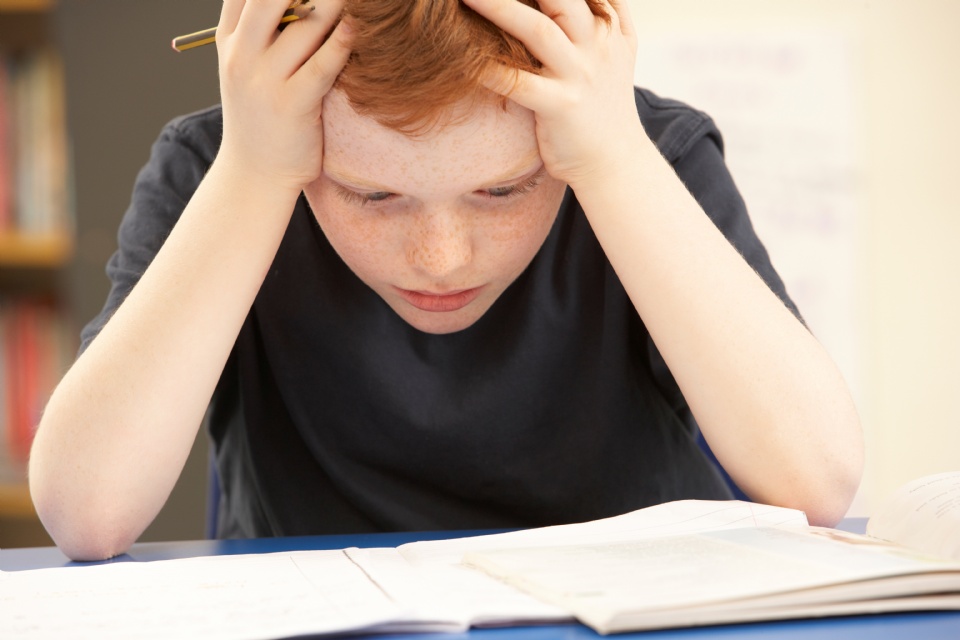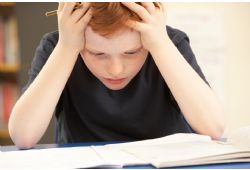In today’s classroom, children are now faced
with more problems than their social circle and studies. How does one deal with
anxiety? The classroom is no longer limited to its four walls. But as the world
becomes the classroom, children are also being exposed to what’s out there.
The internet is not only used for information.
Children are also being exposed to the global platform. They are aware that
there is so much going on; they are not censored to all negative experiences,
such as divorce and death. Many children face performance anxiety because their
parents are constantly pushing their children to perform. Parents also set the
example from their own work ethic, pushing themselves to perform well at work
and committing a lot of time to their work schedule. Extracurricular activities
can also be a cause for anxiety, meaning that most children are no longer doing
a sport just for fun, but are in it for the competition. Parents and coaches,
as well as peer groups can also place unwanted pressure on the child to
perform, hence causing anxiety.
Experts, such as child psychologist Golda
Ginsburg, PhD, explains that “parents and teachers should determine whether a
child has anxiety when there is fear or danger associated with the thought and that
it affects their behaviour. There is also a healthy anxiety which can also
drive someone to perform well on a test, but it shouldn’t consume the child’s
life. A teacher should also be responsible for informing the parents should
they see a child suffering from anxiety at school.” (APA.org)
Physical symptoms of anxiety include stomach
aches and headaches. According to Health Central, there are some tips to reduce
classroom anxiety; small group work encourages student participation and reduces
social anxiety. It is also recommended to switch up the groups every so often
because children can sometimes exclude others. Anxiety can definitely affect a
child’s academic performance. Another way to reduce anxiety in the classroom is
to stick to the routine; most children seek comfort in routine and they don’t
like being rushed into new activities. (HealthCentral.com)
Teachers may post up the daily activities on
the wall so that children can follow. If changes should be done to the
schedule, let the class know in advance so that the children can brace
themselves for the change and know that it is coming. Should you see a child
suffering from anxiety it is important to remove them from the “stressful
situation” and send them to a quiet, safe space for some downtime, such as a
social worker’s office. Usually, the parent and the teacher are both aware of
the child’s anxiety issues and they can accommodate a child suffering from
school anxiety with extra testing time, shorter class schedule or extra
tutoring or counseling for reassurance.
Anxiety can be dealt with when recognized.
Students should not have to suffer alone and a responsible adult, such as a
parent or teacher should not turn a blind eye to it. There are always
non-medical ways of treating anxiety and most of the time by having a
discussion with the child, you can see where their anxiety stems from. Should
anxiety consume a child’s life and affect their mood and behavior permanently,
it is important to seek professional assistance.

 In The Latest Issue:Latest Issue:
In The Latest Issue:Latest Issue:
- Celebrating Community an...
- Celebrating the Unsung H...
- Understanding Newborn St...
Articles
Calendar
Virtual- ANNUAL TEACHER APPRECIATION CONTEST
- APPUI LAVAL
- ARTS & CULTURE
- CAMPS
- CAR GUIDE
- CCIL
- CENTENNIAL ACADEMY
- CHARITY FUNDRAISING
- CITYTV
- COSMODÔME
- COMMUNITY CONNECTIONS
- COVER STORY
- DINA DIMITRATOS
- ÉCOLE SUPÉRIEURE DE BALLET DU QUÉBEC
- EDITORIALS
- ÉDUCALOI
- EDUCATION
- EMPLOYMENT & ENTREPRENEURSHIP
- FÊTE DE LA FAMILLE
- FÊTE DU QUARTIER SAINT-BRUNO
- FAMILIES
- FESTIVAL LAVAL LAUGHS
- FÊTE DE QUARTIER VAL-DES-BRISES
- FINANCES
- GLI CUMBARE
- GROUPE RENO-EXPERT
- HEALTH & WELL-BEING
- 30 MINUTE HIT
- ANXIETY
- CHILDREN`S HEALTH & WELLNESS
- CLOSE AID
- DENTAL WELLNESS
- EXTREME EVOLUTION SPORTS CENTRE
- FONDATION CITÉ DE LA SANTÉ
- GENERAL
- HEARING HEALTH
- MESSAGES FROM THE HEALTH AGENCY OF CANADA
- MENTAL HEALTH
- SEXUALITY
- SOCIAL INTEGRATION
- SPECIAL NEEDS
- TEENS
- THE NUTRITION CORNER
- THE NUTRITION CORNER - RECIPES
- VACATION DESTINATION
- WOMEN'S FITNESS
- WOMEN'S HEALTH
- HILTON MONTREAL/LAVAL
- HOME & GARDEN
- INTERNATIONAL WOMEN'S DAY
- JAGUAR LAVAL
- LAVAL À VÉLO
- LAVAL FAMILIES TV SHOW
- LAVAL FAMILIES MAGAZINE CARES
- LAVAL URBAN IN NATURE
- LE PARCOURS DES HÉROS
- LES PETITS GOURMETS DANS MA COUR
- LEON'S FURNITURE
- LEONARDO DA VINCI CENTRE
- LFM PREMIERES
- LIFE BALANCE
- M.P. PROFILE
- MISS EDGAR'S AND MISS CRAMP'S SCHOOL
- MISSING CHILDREN'S NETWORK
- NETFOLIE
- NORTH STAR ACADEMY LAVAL
- OUTFRONT MEDIA
- PASSION SOCCER
- PARC DE LA RIVIÈRE-DES-MILLE-ÎLES
- PÂTISSERIE ST-MARTIN
- PIZZERIA LÌOLÀ
- PLACE BELL
- PORTRAITS OF YOUR MNA'S
- ROCKET DE LAVAL
- SACRED HEART SCHOOL
- SCOTIA BANK
- SHERATON LAVAL HOTEL
- SOCIÉTÉ ALZHEIMER LAVAL
- STATION 55
- STL
- SUBARU DE LAVAL
- TECHNOLOGY
- TEDXLAVAL
- TODAY`S LAURENTIANS AND LANAUDIÈRE
- TODAY`S LAVAL
- WARNER MUSIC
- THIS ISSUE
- MOST RECENT
Magazine
Dealing with Student Anxiety in the Classroom
Articles ~e 105,7 Rythme FM 4 chemins Annual Teacher Appreciation Contest Appui Laval Arts & Culture Ballet Eddy Toussaint Camps THIS ISSUE MORE...
CONTESTS Enter our contests
CONTESTS Enter our contests
CALENDAR
Events & Activities
COMMUNITY Posts Events
PUBLICATIONS Our Magazine Family Resource Directory
LFM BUSINESS NETWORK Learn more
COUPONS Click to save!
COMMUNITY Posts Events
PUBLICATIONS Our Magazine Family Resource Directory
LFM BUSINESS NETWORK Learn more
COUPONS Click to save!
SUBSCRIPTIONS
Subscribe to the magazine
Un-Subscribe
E-NEWSLETTER Subscribe to our E-newsletter Un-Subscribe
WRITE FOR US Guidelines & Submissions
POLLS Vote today!
E-NEWSLETTER Subscribe to our E-newsletter Un-Subscribe
WRITE FOR US Guidelines & Submissions
POLLS Vote today!
ADVERTISERS
How to & Media guide
Pay your LFM invoice
SUGGESTIONS Reader's Survey Suggest a Listing
LFM About Us Our Mission Giving Back Contact Us
SUGGESTIONS Reader's Survey Suggest a Listing
LFM About Us Our Mission Giving Back Contact Us
 PICK-UP LOCATIONS
Get a copy of LFM!
PICK-UP LOCATIONS
Get a copy of LFM!
TERMS & CONDITIONS Privacy | Terms
ISSN (ONLINE) 2291-1677
ISSN (PRINT) 2291-1677
Website by ZENxDESIGN



 BY:
BY: 


Tweet
Share